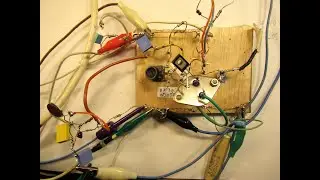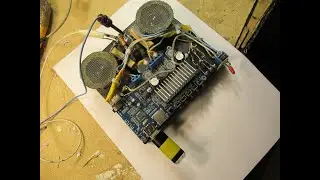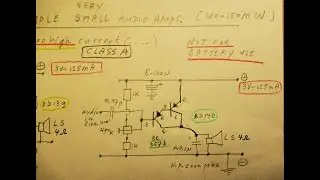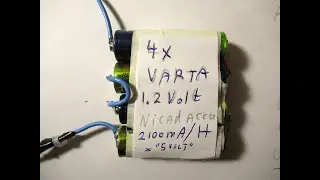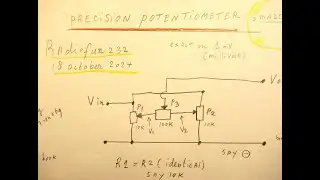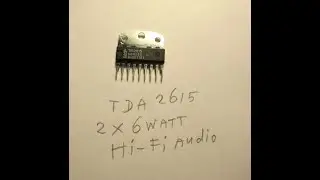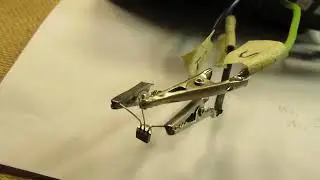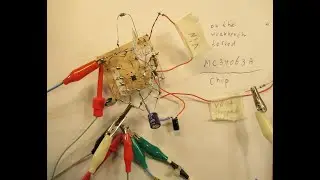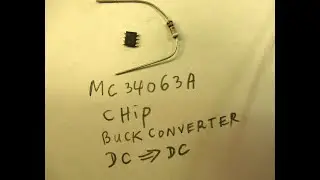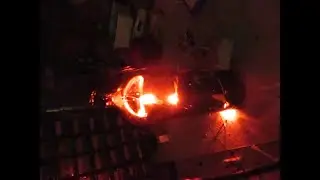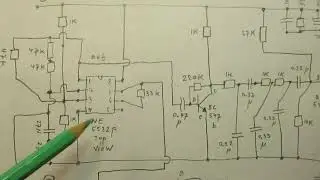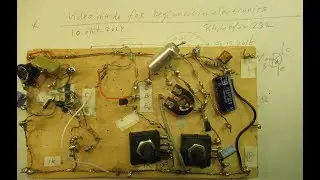The MC 34063 A tested as STEP UP converter DC to DC schematic and demo (low to higher DC voltage)
Please read the description first.
The DC Converter MC 34063 A from Texas Instruments is now tested as DC-DC Step UP converter. Say: 5 Volt "in" and (say) 25 Volt "out".
First video (step down DC-DC) with this Chip (15 October 2024) is here
• The MC 34063A (DC to DC up/down) Buck...
Much more about how Stepping UP works in practice (with or without a load, connected to the output of the chip) is told in the video now, 16 October 2024, so watch it for more crucial info. When you want to use this chip and/or want to do experiments with it.
Corrections & more about this video (16 October 2024):
1) On 2.03 I say “with a load of 1 K we have a substantial output voltage” (compared to the situation when the output of the DC-DC converter is “open”, thus has no load). I only mean that with a certain load (here in this test 1000 Ohms, realizing an output current in the Milli-Amp range) the circuit also works good as a DC to DC up converter. Though the output Voltage falls (somewhat).
2) What is the frequency where the oscillator works? I cannot describe it exactly. In the schematic (showed) I note “50 KC or so”, anyway. The noise and ripple at the output (AC peaks somewhere in the HF range, showed on the oscilloscope) of this DC to DC converter chip makes it less usable for sensitive radio circuits or sensitive audio circuits. This resonance phenomenon at the output looks like “ringing”, but not completely uncontrolled. That has to do with the good properties of the Chip. Wild “ringing/oscillation” on HF is very difficult to get under control. The Texas Instruments datasheet shows a filter to get this under control (not tested here & now).
3) Thanks to @benryves, one of my YT followers. Sorry for my English, using the word "that", it has to be "He". He told me that the relation between R 1 and R2 is crucial for the output voltage, both in the step-up and the step down figuration. So I could explain how important that relation is for the (realized, in practice) output voltage.
4) Like I told in the arlier video: I have used a normal Si-diode (1N 4007, say made for 1000 Volt) instead of a Shottky diode.
5) In the Texas Instruments Datasheet on the www. you can find how to use this chip as a “driver” to get more (stabilized) current (!) out, with the help of an extra power transistor. Compare the setup to the Darlington circuits that I have published on my YT Channel, during (say) the past 10 years.
I am not going to elaborate more on this chip, I rest this case, and thanks for watching. You can of course do your own tests. Say mounted it on a heatsink or so, or with that extra power transistor. This test (DC up converter) and the other test of yesterday (DC down converter) show the “basics”. For small output currents this chip (both as a step down and a setup up converter) can work OK.
Valid laws: Ohms Law (U=IxR) and, when we are talking about Watts (output power or input power): Watt = Volt x Ampère. They tell what you can expect here via this Chip. Efficiency of the chip is in the order of 80 % (Datasheet T.I.).
NB: when you give this chip in this application (DC to DC step up) a too high input Voltage (say in the order of 20 Volts) the 150 uH or 170 uH coil burns out (smoke, though not when the coil is not so tiny as I show it here and is not factory made, say a home made coil of 170 uH with a bigger type of isolated copper wire) and the chip burns out (tested).
The chip always burns out, by the way, in such a case.
My You Tube channel trailer is here: • Radiofun232 on YouTube. Updated month...
When you search, search always “NEWEST FIRST” to get the right overview. You can also search via the “looking glass” on my Channel trailer via keywords like ”audio”, “radio”, “amplifier”, “filter”, “Shortwave”, “transistor”, “FET”, “oscillator”, “generator”, “switch”, “schmitt trigger” etc; so the electronic subject you are interested in.
My books about electronics & analog radio technology are available via the website of "LULU”, search for author “Ko Tilman” there. Direct LINK to my books is here
https://www.lulu.com/search?adult_aud...
Search via the "Looking Glass" (= my YT video's) and/or via my books, there, and avoid my circuits that are republished, re-arranged, re-edited on other websites, giving not probable re-wiring, etc. Some persons try to find gold via my circuits. I take distance from all these fake claims. I cannot help that these things happen. Upload 16 October 2024.







![Undertale Comics MIX RUS DUB [Determination Pie] - ПОДРОСТКИ](https://images.videosashka.com/watch/DMGw6R07mfI)
